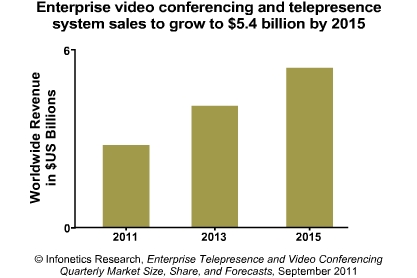The Cisco Global Cloud Index is an ongoing effort to forecast the growth of global data center and cloud-based IP traffic. The forecast includes trends associated with data center virtualization and cloud computing.
From 2000 to 2008, peer-to-peer file sharing dominated Internet traffic. As a result, the majority of Internet traffic did not touch a data center, but was communicated directly between Internet users. Since 2008, most Internet traffic has originated or terminated in a data center.
Data center traffic will continue to dominate Internet traffic for the foreseeable future, but the nature of data center traffic will undergo a fundamental transformation brought about by cloud applications, services, and infrastructure.
By 2015, one-third of data center traffic will be cloud traffic.
Global Data Center IP Traffic: Already in the Zettabyte Era
The Internet may not reach the zettabyte era until 2015, but the data center has already entered the zettabyte era. While the amount of traffic crossing the Internet and IP WAN networks is projected to reach nearly 1 zettabyte per year in 2015, the amount of data center traffic is already over 1 zettabyte per year -- and by 2015 will quadruple to reach 4.8 zettabytes per year.
This represents a 33 percent CAGR.The higher volume of data center traffic is due to the inclusion of traffic inside the data center (Typically, definitions of Internet and WAN stop at the boundary of the data center).
The global data center traffic forecast, a major component of the Global Cloud Index, covers network data centers worldwide operated by service providers as well as private enterprises.
Traffic Destinations: Most Traffic Stays Within the Data Center
In 2010, 77 percent of traffic remains within the data center, and this will decline only slightly to 76 percent by 2015. The fact that the majority of traffic remains within the data center can be attributed to several factors:
- Functional separation of application servers and storage, which requires all replication and backup traffic to traverse the data center.
- Functional separation of database and application servers, such that traffic is generated whenever an application reads from or writes to a central database.
- Parallel processing, which divides tasks into multiple smaller tasks and sends them to multiple servers, contributing to internal data center traffic.
The ratio of traffic exiting the data center to traffic remaining within the data center might be expected to increase over time, because video files are bandwidth-heavy and do not require database or processing traffic commensurate with their file size.
However, the ongoing virtualization of data centers offsets this trend. Virtualization of storage, for example, increases traffic within the data center because virtualized storage is no longer local to a rack or server.
How does the transition of workloads from traditional data centers to cloud data centers effect the typical IT environment? Find the answer to this question, and learn more about the implications, by browsing the Cisco Global Cloud Index forecast data.


